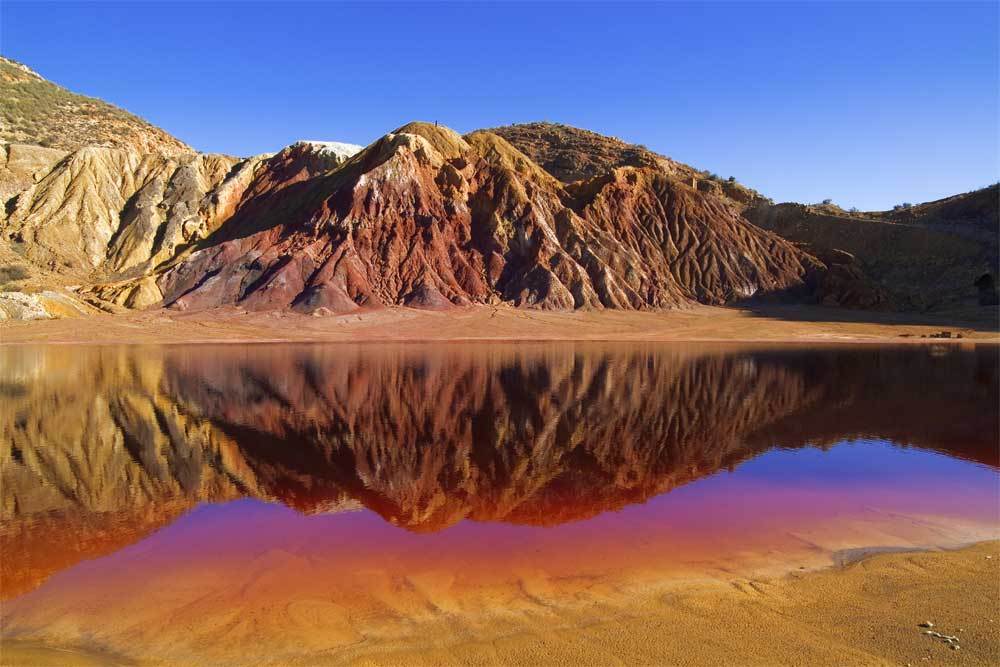Minas de San Cristóbal y Los Perules
Sierra Minera (ladera norte de Mazarrón)
30870
MAZARRÓN
Telephone: +34 968594426
e-mail: turismo@mazarron.es
www.visitamazarron.com
Proof of the rich Phoenician trade is that historians of the antiquity, as 'Diodorus Siculus, did chronicles like this: "... The Phoenician merchants who sailed to Iberia ... when his boat was overloaded with silver ... removed the lead from their anchors and, instead of lead, they did the stock of silver ".
Phoenicians, Greeks and Carthaginians passed along our coasts until the Second Punic War brings the fall of 'Carthago Nova' (209 B.C.) and the Roman conquest. The Romans are those who undertake the greatest exploitation of the antiquity.
Within the grounds of "Coto San Cristóbal” (“coto” means property) and "Los Perules" is "Corta Romana", popularly known as “El charco de la aguja” (Needle’s puddle). It’s a quarry which was originally a large front of mining works (extracting profit of the mines doing the required labours or excavations, fortify the area, arranging traffic in the enclosure and extracting usable ores), over 300m long, with an average height of more than 25m.
Elsewhere in the town, as “Coto Fortuna” in Leiva, are conserved important works of Roman engineering like a draining gallery about 2km, one of the works of these most important characteristics of the Empire (not visitable nor visible because the gallery is located at 8 metres underground). The Roman company that exploited it, was named 'Societas Montis Argentaris Ilvcro', and ingots with this Roman company brand have appeared even into the Tiber, near the same Rome. The life of these miners must not have been easy, according of the finding of a human limb chained with shackles to a gallery.
Mining developed during the Visigoth and Muslim period, although few testimonies were left. A large decline is perceived pointed to almost disappear.
Mining industry rebirth with the Reconquista and the Christian settlements, and with it the “embryo” of what will be the current municipality of Mazarrón. Dependent on the Council of Lorca, it appeared the workers house called “Casas de los Alumbres de Almazarrón” (Houses of the Alum of Almazarrón). 1462, Henry IV of Castile granted the privilege of the exploitation of the mines to the marquisates of Villena and Vélez, keeping its splendour about 1592. Alum was used mainly as mordant to fix the dyes, exporting for the production of tapestries in the Netherlands. Also as an astringent and disinfectant intervened in leather tanning, lighting of codex and in glass manufacture. This mining wealth causes the segregation of the town and formalized in 1572 with the privilege letter signed by Philip II.
In the 19th century, Mazarrón reached unprecedented and unexpected technological, economic and population levels.
Free prospecting on public lands through a simple notification to the Administration, causes an authentic mining fever. Mazarrón grows rapidly and international mining companies decide to invest and modernize works. In 1886 a railway linked Mazarrón's mines with the foundry of Santa Elisa in Puerto de Mazarrón and, 1893, the mines already enjoy electricity. Thanks to its mines, Mazarrón leads the mining sector of Murcia and is situated at the national forefront. It came to undertake works up to 600m deep.
At the entry of 20th century they started to feel the first symptoms of decline. Some reasons for this decline are:
a) Flood of wells and incapacity for water evacuation.
b) Drop in the prices of lead.
c) Depletion of richest veins.
d) Civil War.
At the closing of the mines, Mazarrón suffers a significant emigration.
Mazarrón has managed to adapt to the times recovering the ancient
splendour with activities of other sectors such as tourism, the service sector,construction sector and tomatoes’ cultivation.





